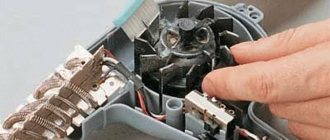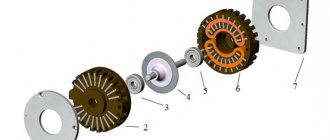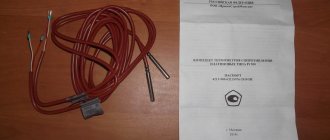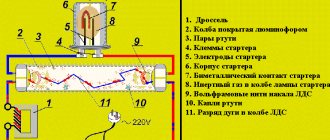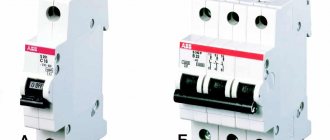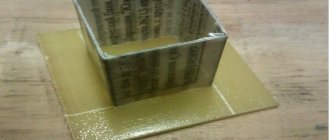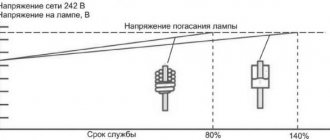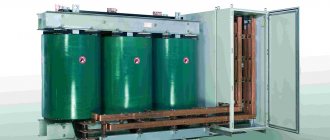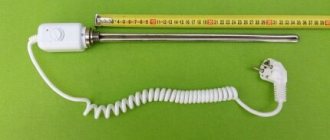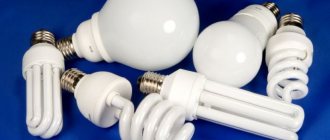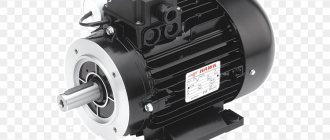This household appliance has been helping to dry hair for more than 75 years - the first example of this electrical product appeared in the early 40s of the last century. Today there is a hairdryer in almost every home, and everyone knows the rules for its use. But the internal structure of a hair dryer is familiar only to some - we will try to fill this gap in knowledge.
Little tricks
There are standard requirements for the safe operation of an electric hair dryer, which can push the boundaries of trouble-free operation of the device, without contacting service centers:
- There is no need to wrap the electrical wire around the handle of the device and generally try to avoid twists and loops on the wire;
- Use only those attachments that were supplied with the device;
- Do not use the device in rooms with high humidity to prevent water from entering the hair dryer body;
- If the distance to the outlet is too large, only factory extension cords can be used;
- It would be a good idea to protect the air intake area with a fine-mesh filter to prevent dust particles and hair from getting inside the device;
- Do not carry the hair dryer, holding it suspended by holding it with your hand by the cord;
- If even minor interruptions occur, further operation of the device is prohibited;
- Avoid excessive overheating of the product;
- After work, you need to let the device cool down and only then put it away for storage;
- The electric hair dryer must be stored in a dry and ventilated area;
- Follow basic safety rules when repairing electrical appliances;
- Repairing a hair dryer requires electrical skills. If they are not there, it is better to entrust the work to professionals in specialized workshops.
Let us repeat once again - independent repairs are possible if all work is carried out especially carefully. This is always true for electrical appliances.
Page 1 of 2
This electrical appliance - a hair dryer - is very popular and often indispensable in everyday life. Due to high consumer demand, the designs of most hair dryers have become very similar, and the quality of workmanship and price have dropped. Today, buying a truly durable hair dryer is very difficult. The practice of repairing hair dryers of various brands suggests that the breakdowns that occur are of the same type and, as a rule, are not fatal, but can be easily repaired without serious expenditure of money.
Any electric hair dryer in its design contains two main, large elements: a fan and a heater. The fan drives air through the heater (heating element), drawing it in behind the hair dryer and expelling it hot from the front.
Hair dryer device. 1 - propeller; 2 - electric motor; 3 - heater; 4 — thermal protection; 5 — mode switch; 6 - power cable.
In household hair dryers, the fan is built on the basis of low-voltage (12-18 V) DC commutator motors. Such a motor cannot be powered directly from a 220 V AC network. To achieve the required voltage drop, a separate coil (let's call it a step-down coil) is used inside the heating element. To rectify the voltage, a full-wave rectifier (diode bridge) is used, mounted on the contacts of the electric motor. A plastic propeller consisting of three or more blades is mounted on the metal shaft of the engine.
The heating element of the hair dryer is a frame made of fireproof material with several windings of nichrome wire (spiral). Depending on the number of operating modes of the hair dryer, there may be two or three windings, one of which is step-down.
Heating element with two windings.
The hot coils of the heating element must be constantly blown with cold air, especially when operating at maximum power. If for any reason the air supply becomes insufficient or stops altogether (for example, the engine fails), then, for reasons of fire safety and to avoid burnout of the heating element, the hair dryer should automatically turn off. This emergency shutdown occurs due to the presence in the hair dryer of two heat-sensitive elements at once - two “lines of protection” inside the heater.
The first “frontier” is the thermostat. It consists of a pair of closed contacts mounted on a bimetallic plate. Being close to the outlet of heated air, the contacts are intensively blown by it. When the exhaust air reaches a critical temperature, the contacts move away from each other, and the power supply circuit of the hair dryer opens. After a few minutes, when the bimetallic plate has cooled, the contacts will close again and the hair dryer will turn on.
Thermostats based on bimetallic plates.
If the above protection for some reason does not work at the right time, then a few seconds later the “second line” of protection is activated - the thermal fuse. This fuse is disposable and, after tripping, needs to be replaced.
Thermal fuse.
Rowenta CV 4030 hair dryer device.
To see the internal structure of a household hair dryer, let's look at its typical representative - Rowenta CV 4030. This model is equipped with a fan based on a low-voltage motor, the heating element consists of one reduction coil and two heating coils. The hair dryer has three operating modes; in the first mode the fan speed is lower than in the other two. The schematic diagram of this hair dryer is presented below.
In the first position of switch SW1, the mains power passed through the XP1 plug, filter C1R1, protective elements F1, F2, diode VD5 (necessary to cut off one half-wave of alternating voltage) is supplied to the step-down coil H1, through which the electric motor M1 is powered. Diodes VD1-VD4 are necessary to rectify the alternating voltage reduced by the H1 spiral. Inductors L1, L2 and capacitors C2, C3 serve to reduce interference that occurs during operation of the brush motor. Through the VD5 diode, power is also supplied to the heating coil H2.
When switch SW2 is moved to position “2”, diode VD5 is short-circuited and “goes out of play”. The engine starts to operate at maximum speed, the H2 spiral heats up more. The third position of the switch SW2 corresponds to the maximum power consumption mode, when the H3 spiral is connected in parallel with the H2 spiral. In this position, the temperature of the exhaust air is highest. The “cool” button is included in the gap of both heating spirals; when pressed, only the electric motor through the H1 spiral remains turned on, the H2 and H3 spirals are de-energized.
The process of opening the Rowenta cv4030 hair dryer.
Hairdryer in semi-assembled form.
Hairdryer without housing. From bottom to top: switch SW1, capacitor C1 with resistor R1 soldered to it, button SB1, heating element, motor with propeller (in a black casing).
A heating element.
The VD5 diode (photo on the left) and inductance coils (photo on the right of one coil) of the Rowenta CV 4030 hair dryer are mounted inside the heating element.
Thermostat (photo on the left). Thermal fuse (photo on the right)
Previous 1 Next
Heating element assembly
The main problem when assembling a device such as a hair dryer for soldering microcircuits with your own hands is the creation of an element for heating. Heaters from household devices such as a hair dryer or soldering iron are unsuitable in this case. The required part should be made independently based on nichrome wire, the cross-section of which is 0.4-0.8 mm. Nichrome with a large cross-section provides high power, but it will be difficult to achieve the desired temperature. For a compact position of the heating element, you will need to make a spiral with a diameter of 4-8 mm.
The spiral must be wound onto some kind of cylindrical base made of a material with high thermal resistance. In this case, quartz or porcelain is used in the form of an empty cone or tube. This base can be removed from an old hair dryer. A product made of quartz from tube-based halogen lamp spotlights with a power rating of 2.3-2.6 kW becomes more preferable.
A small standard fan is suitable as an element responsible for forcing air flow. When assembling a hair dryer at home, this part will become the most expensive. The blower can be removed from an old high power hair dryer. For household fans, the BAKU 8032 brand with a power of 30 l/m is suitable.
The assembled hairdryer for soldering microcircuits with your own hands, the photo of which is presented in this article, operates from a 220 V power supply and has a power of approximately 420 Watts.
The cheapest and most standardized option is to use a small compressor for aquarium fish. It is installed together with the receiver (air storage tank). For this purpose, any small plastic bottle is used, since there will be no heating in the installation area, and hot air will escape in the opposite direction.
When manufacturing the device body, several options are used:
- A material with a high level of thermal insulation is used (ceramics or porcelain). But these materials are not cheap and will complicate the design.
- Highly reliable thermal insulation is used to distribute hot air. In this case, the material is not affected by temperature, with the exception of the area adjacent to the nozzle.
The body base, which also includes the handle, can serve as the base of any medium-sized household hair dryer. The body nose, that is, the nozzle, is made of thermal insulation material that can withstand heating temperatures of 800 ºС. At the same time, it acts as an insulator for other parts of the housing from high temperatures. The nozzle must be made of metal, taking into account possible contact with melts during the soldering process.
Thermal insulation can be provided by quartz elements (tube, plate, mica, fiberglass, glass, porcelain, ceramics, etc.). When manufacturing the unit, heat-resistant glue will be needed.
A power control system can be assembled from old electrical appliances, provided they are in working order. A key or push-button modification is used as a switch.
Rules for using the device
In order for a hair dryer to last for a long time, as well as to avoid injuries, it is necessary to follow certain rules for working with it. Among the most significant are the following:
- Put a cap or headband on your head and hide your hair under it.
- It is necessary to remove flammable liquids and objects from the room where you plan to work with a hairdryer.
- Ensure good ventilation of the room.
- When removing a layer of paintwork, it is recommended to turn your head to the side. This is necessary in order to avoid paint vapors from entering the nasopharynx. You can wear a protective mask or respirator.
- A hot device must not be placed horizontally. It is better to hang it on a special mount.
- It is necessary to change attachments only after the equipment has completely cooled down, or do this while wearing heat-protective gloves.
- When working on the ceiling surface, you must not be directly under the tool. This will help prevent debris from getting into your eyes.
- Never close the air intake compartment. Otherwise, the hair dryer may overheat.
- If the power supply to the network is lost, you should immediately unplug the cord from the outlet.
- After finishing work, do not touch the work surface: its temperature can be very high.
- If the hair dryer is not in use, it must be packed in a box. This should be done only after it has completely cooled down.
The device is one of the popular electric tools among users, which have a wide range of uses. You can easily and simply make it yourself.
Originally posted 2018-04-18 12:19:01.
Varieties [ edit | edit code ]
There are two main types of hair dryers - a hair dryer for drying and styling hair and a technical hair dryer. The principle of their operation is the same, the only difference is in the temperature and speed of air flow at the outlet of the device.
Hair dryer for drying and styling hair [edit | edit code ]
A hair dryer for drying and styling hair produces an air flow with a temperature of about 60 °C and high speed. They try to install protection against overheating in the hair dryer to avoid damage to the hair by hot air. Modern hair dryers also have an air ionization function, designed primarily to remove static charge, and also promise smooth and silky hair.
Construction hair dryer [edit | edit code ]
A technical hair dryer is distinguished by its ability to produce a stream of air heated to a temperature of about 300-500 °C, but at a low speed. Various models of technical hair dryers may also have modes with lower air temperatures, for example, 50 °C. There are models that allow you to obtain air with temperatures in the range of 50-650 °C in steps of 10 °C or continuously adjustable. Some models allow you to adjust the air flow.
The construction hair dryer has a large number of applications, including:
- Drying;
- Heating of adhesives before application (including directly on the surface to which they are applied);
- Heating the adhesive layer before separating the glued parts (for example, removing stickers);
- Heating of some detachable metal connections before disassembling them;
- Heating thermoplastic parts to give them shape (for example, bending or fitting pipes);
- Heating varnish and paint coatings to remove them;
- Soldering and tinning of metals;
- Welding (primarily thermoplastics);
- Application of thermoplastic sealants;
- Fitting thermosetting electrical insulation on wires;
- Lighting coals in the grill;
- Warming frozen water pipes;
- Heating polyester or epoxy resin to cure faster.
Soldering gun [edit | edit code ]
Hand soldering with hot air using special hair dryers has become popular with the widespread use of surface mounting and the advent of microcircuits with a large number of pins. Hot air soldering equipment is much cheaper than infrared ovens, while significantly facilitating and speeding up the work of the installer and repairman of surface-mount printed circuit boards compared to a stick soldering iron.
As a rule, soldering guns are included in the kit of some soldering stations. The main differences from construction hair dryers are their smaller size, a body for a different type of grip (without a side handle), smoother and more precise adjustment of temperature and air flow, and a set of nozzles with thin nozzles. Soldering guns are equipped with stands and automatic temperature reduction when on the stand.
When installing using soldering guns, they usually use not hard solder, but solder paste (a special mixture of solder powder and flux).
Soldering hair dryers, as a rule, come in two types: with a turbine built into the hair dryer and with a pump built into the soldering station. Hair dryers with turbines have weaker air flow, and the hair dryer itself is larger. A hair dryer with a pump is connected to the station by a relatively thick air hose.
Some tips
Repairing a professional device is quite complicated. Since the parts contained in it are equipped with special controls and various options, such as the Care button. In addition, the spiral is often made of a special alloy, which, when heated strongly, creates negative ions that have a beneficial effect on hair quality.
But such devices also have the same methodology:
- cable;
- switches and various buttons;
- cleaning from dust and dirt;
- inspection of the spiral and motor;
- capacitor and resistor control.
But before carrying out independent repair work, you need to familiarize yourself with the circuit diagram of the device. As you can see, repairing household hair dryers is not that difficult. But if there are any doubts, then you should not fix them yourself, but rather take them to a service center.
Possible faults
Despite its apparent simplicity, the hair dryer has some things to break:
- The power cord may have an internal break or short.
- The thermal fuse has failed.
- The resistor has burnt out.
- A breakdown of the diode bridge has occurred.
- The capacitor has burnt out.
- The mode switch itself is broken.
- The cold air switch is broken.
- The motor shaft is jammed due to hair being wrapped around it.
- The motor shaft bearing is jammed.
- The engine itself burned out.
- Broken nichrome spiral.
- Closing the heating coil.
- Carbon deposits on a spiral.
- The fan blade broke off.
This is the entire list of possible faults.
We will focus only on typical breakdowns that we can fix ourselves.
Characteristic signs of a faulty device:
- The device does not turn on;
- The device turns on, but the fan does not spin or gain speed;
- When running, the engine sparks and smells burnt;
- The hairdryer only blows cold air.
Repair of a hair dryer coil and determination of a heating element malfunction
You can hear the following advice from experienced specialists: if the coil on an industrial hair dryer burns out, then it’s easier to buy a new tool. Why buy a new hair dryer when you can repair or replace the hair dryer coil.
However, before we find out how to repair a hair dryer coil, we will consider the features of diagnosing its malfunction. The principle of diagnosing a hair dryer coil is as follows:
- First you need to remove the heating element from the metal flask
- Next, you should inspect the connection of the wires to the contacts of the heating element spiral. Very often the cause of a hair dryer malfunction is a banal disconnection of one of the wires or oxidation of the contacts
- Turn the multimeter into resistance measurement mode and connect the spiral to the contacts. The hair dryer uses 1 or more spirals, which depends on the design and number of speeds of the tool
- The spirals must have resistance, and if the device shows a zero value, then the integrity of the nichrome thread is compromised. Over time, due to exposure to high temperatures, the nickel-chromium thread loses its properties and becomes brittle, and therefore fails
If the diagnostics show that the coils are working properly and have resistance, but the hair dryer does not work, then the breakdown is hidden directly in the thermal fuse - a thermocouple. This is an element that prevents the coil from overheating, however, under the influence of high temperatures, the thermocouple can also fail. The principle of its operation is that as the temperature increases, the resistance in the circuit changes. You can check the serviceability of the thermocouple with a multimeter by measuring the resistance. If the element is working, the device will show the resistance value, and if it is faulty, then the resistance will be zero.
Now let’s consider a situation where the hair dryer coil has failed. What to do if the spiral is broken, and how to repair it? To repair the nichrome spiral of a hair dryer, you will need to use small connecting elements, that is, a bolt with a nut. It is with the help of these parts that you can connect the nichrome spiral of the hair dryer. Soldering the spiral will not help, since the nickel-chromium material cannot be soldered. To repair a hair dryer coil, you will first need to find the break point, and then perform the following steps:
- Assess the condition of the spiral. If it not only has a break, but is also damaged in different places, then it is recommended to replace it
- The break is eliminated by connecting two parts of the spiral using small bolts and nuts. Connected areas must be strong
- Connecting the spiral with threaded connectors increases the resistance, so keep in mind that the heating temperature of the tool will be reduced
As you can see, it is not at all difficult to repair the spiral of a hair dryer. If the heating element cannot be repaired, then it can be replaced. To do this, you will need to buy a new spiral of the appropriate length and replace it. In addition to replacing the coil, you can also buy a new heating element assembly for your make and model of hair dryer. However, it is not possible to find new heating elements for all hair dryer models. The most popular manufacturers of the instruments in question:
- Interskol
- Bison
- Makita
- Hitachi
- Storm
It is not recommended to buy the cheapest version of a hair dryer, but if the tool is needed only for one-time use, then it makes no sense to overpay for a branded device that costs 2-3 times more. Repairing hair dryers is quite easy if you approach this issue correctly. To do this, you need to follow a clear sequence of actions to identify the breakdown and fix it as quickly and easily as possible.
https://youtube.com/watch?v=5N1x6rDvMds%3F
Construction hair dryer device
A construction or technical hair dryer is a power tool designed to locally heat surfaces with a stream of hot air. Outwardly, it looks like a regular household appliance, only it is slightly larger in size and creates a higher temperature - up to 650o C. The hot air gun consists of the following main parts:
- housings made of heat-resistant plastic with a pistol-type handle and holes for air intake;
- a thermal insulating casing, inside of which there is a heating element in the form of a nichrome spiral wound on a ceramic base;
- an electric motor mounted behind the casing, at the location of the air intake holes, and a fan impeller mounted on its shaft;
- nozzles through which hot air is supplied outside;
- tool power buttons;
- power cable.
Some hair dryers are equipped with temperature regulators and indicators, as well as the ability to turn off the heating function when the fan is running. The last addition to the design is necessary for cold blowing of heated parts in order to cool them faster.
Device structure
The main elements that make up a hair dryer:
- engine;
- a heating element;
- fan.
The device has a lot of power, and its performance depends on the number of liters of air that the hair dryer passes per minute.
Many modern models have the following functions:
- air flow and temperature adjustment;
- selecting the desired operating mode;
- attachments that simplify working with materials of varying strengths;
- LED indicator that determines the heating temperature.
Tip
Unlike a conventional hair dryer, a construction hair dryer has a much more powerful electric motor and heating element. An electric motor, coils and fans are concentrated inside a case made of impact-resistant plastic. The latter are heating elements.
In addition to these elements, there are additional elements inside the mechanism that play an important role in the operation of the hair dryer:
- Power off button. Sometimes with built-in temperature controller.
- Temperature regulator. The air leaving the tool nozzle is heated by this sensor.
- Replaceable nozzles. They are attached to the nozzle.
Electrical circuit of a hair dryer
The simplest model can simply dry your hair with hot air.
More complex specimens have three airflow options:
- warm;
- hot;
- cold.
There is also a “more/less” fan speed control.
The heating element in a simple version is a nichrome spiral thread.
If you look at the diagram:
It is clearly seen that after the current passes through the spiral, which has its own resistance, it loses its strength. Now he needs to get to the electric motor. But first it is straightened through a diode bridge and only then goes to the electric motor.
The motor is connected to the impeller. It is she who supplies outside air to the hair dryer body. Passing through a hot spiral, the supplied air warms up and exits this hair dryer through a nozzle.
The entire device is controlled by an external switch, which allows you to:
- Turn on/off the device.
- Adjust the air flow speed.
- Select heating or fan mode.
Modern models are equipped with protection that will not supply voltage to the heating element if the motor is not turned on.
There may also be a thermostat - it prevents the coil from overheating too much and will turn off the power supply in time.
If there is an electrical circuit for the device, we will repair your home hair dryer together, but in order to understand what is wrong, we will turn to possible malfunctions.
Structural elements and operating principle
The design of the device is divided into internal and external elements. To make the case, durable plastic is used that can withstand minor environmental loads. There is a small fan inside. It works by driving a motor. It also includes additional heating elements. Nichrome is used for their manufacture.
The functioning and principle of operation of a hair dryer for humans will also be clear. Air is supplied to the hair through the operation of a fan. The flow can be heated to the optimal temperature. Thanks to this, it is possible to significantly speed up the process. Air is also concentrated on a specific object using a constriction nozzle.
The nozzle in a hair dryer can be closed with various attachments. A comb or round brush is also placed in this place. With their help, you can easily and quickly process even the longest hair. The design of the comb may be different. It directly depends on the result that needs to be obtained during installation. The fan is protected using fine mesh. It prevents hair and other elements from being sucked into the unit. Thanks to this, it is possible to prevent breakdowns and significantly extend the service life.
Important! The AC motor in the device allows you to switch the speed and intensity of heating. The adjustment is made using special switches located on the handle of the hair dryer.
The circuits of modern models are almost the same.
However, there are a couple of nuances that cannot be ignored when choosing a device:
- Fan blades;
- Motor powered by electric drive;
- The air is heated by a special spiral;
- Additionally, thermal protection should also be used;
- On the handle there is a start button and a lever for changing speeds;
- The device is powered through a special cord.
The fan for the hair dryer is additionally connected to the main components. The circuit also includes a heating element. The optimal solution is to use a collector-type base. For high-quality work, a fan with a power of 12 to 18 V will be sufficient. Some manufacturers prefer to plant the propeller firmly and deeply. The heating element is made only from fireproof material. It is fixed to the body using special resistant wire threads.
It is also possible to use special spirals. It is allowed to use several windings simultaneously. Thanks to this, the hair dryer switches between modes.
However, the circuit must also include a step-down winding.
There are various schemes for interaction between the motor and the fan. The heating element must be located in at least two windings. The spirals have constant contact with the air flow, which allows for efficient cooling. If overheating occurs, the built-in protection immediately starts and the fan stops working. However, it is most often used only on expensive and famous models. The function is available on all Philips and Rowenta hair dryers.
Repair
Let's look at how to repair a hair dryer from Babyliss, Bosh, Remington and other brands at home:
The main thing that needs to be done is to clean the fan, as well as the motor shaft, from any hair that has fallen on them. Quite a large number of them accumulate there even after several weeks or months of active use. To do this, you need to remove the back top panel and then cut the hair, then simply remove it with tweezers or your fingers. O
- If the hair dryer does not turn on, you should immediately check the power cord. As a rule, it breaks at the very base, because during use the hair dryer rotates many times in different directions along its axes. If everything is fine with the wire, then check the contacts on the spiral itself. There may well be 2, 3 or even 4 of them. When the device is hit or dropped, they sometimes become unsoldered, as a result of which the power to the motor is cut off.
- When the failure is related to the fan, repairing the device is incredibly simple. First of all, check if the blades are intact. Of course, their condition will not change their performance too much, but if nicks or cracks are noticed, it is better to immediately replace the propeller. After the propeller, inspect the shaft. It happens that small parts or other debris gets into the nozzle of the hair dryer, which blocks the shaft, as a result of which it begins to rotate slowly.
Safe Operation
The hair dryer has an instruction manual. Every person should familiarize themselves with it before the first drying. By choosing the right approach, it will be possible to extend the service life and save a certain part of the family budget.
A person should know what to watch out for when using a hair dryer regularly:
- If there is a need to use an extension cord, then it is allowed to include the hair dryer only in the factory version;
- Before starting operation, you will need to visually assess the integrity of the cord. It should not be wound around the handles during storage;
- Nozzles are always included with a specific model. The use of other options is strictly prohibited;
- The device must not be used in high humidity or in direct contact with water;
- To prevent small objects from getting inside, the device is equipped with a filter. If it breaks, further use is considered impossible;
- If problems are observed, the hair dryer is disconnected from the network. Continued use may result in serious damage;
- The cord should be removed from the socket smoothly. The composition includes copper wires, which can easily be damaged by any mechanical impact;
- A person must understand what temperature leads to overheating. Long-term operation is dangerous and negatively affects the condition of spare parts.
Allow at least 30 minutes for the hair dryer to cool completely. Only after this is it recommended to lay down the device. It is recommended to allocate a special box or box for it. Proper use will ensure that the hair dryer does not malfunction over a long period of time. At the same time, it will retain its style and excellent external characteristics.
Safety during production and operation
Despite the simplicity of the design, the device is a source of increased danger. Improper handling may result in serious injury or fire. Safety precautions should be observed during manufacture and use:
- Do not use the device in conjunction with gas equipment or near open fire.
- When using the device, be sure to have a fire extinguisher on hand.
- When removing paint and varnish coatings, provide exhaust ventilation or carry out work outdoors. Heated paints may release toxic gases.
- After use, the device can only be placed on a fire-resistant surface to cool.
- Before the first practical use of a device assembled by yourself, check its operation on a low-value part.
If the heater and fan are turned on using separate toggle switches, then the sequence must be followed: first the air flow is supplied, then the heating is turned on. Switching off is carried out in the reverse order.
Hairdryer from a soldering iron
Soldering gun diagram.
Before you make a soldering gun with your own hands, you should:
- think over a device for air supply;
- assemble a special heating element;
- equip the equipment with thermocouples;
- think over a system for monitoring the current temperature of the equipment.
When considering how to make a soldering iron from a regular soldering iron, you should take into account all the subtle points so as not to expose yourself to excessive risk.
The main criteria that a soldering iron-based thermal device must meet are:
- temperature adjustment;
- normal heater power;
- safe compressor.
It is recommended to install a supercharger for a DIY soldering station in accordance with current electrical safety regulations. Connecting the equipment in this way will ensure that there is no interference in the electrical network.
What do you need to create a hair dryer from a soldering iron?
When creating a hair dryer for soldering with your own hands, you should prepare:
- a regular old soldering iron running on AC power;
- a quartz tube to create a hair dryer air flow heating chamber;
- a halogen lamp for spotlights for heating the air and melting flux with a hairdryer;
- nichrome wire up to 0.7 millimeters thick;
- thermostat;
- soldering gun fan.
Schematic diagram of a soldering gun.
All equipment must be connected to specially prepared connectors at the soldering station, the pinout of which depends on the manufacturer of the soldering equipment.
Brief design
A hair dryer consists of a motor, a fan, heating elements, and an electrical circuit that makes the elements work in harmony.
Depending on the number of modes, the manufacturer, the element base, appearance, and composition of the switches are different. But there won’t be anything more complex than a semiconductor thyristor inside. Therefore, we will carry out home repairs of hair dryers with our own hands. The body is held on by screws. The heads are often non-standard. This is a plus sign, an asterisk, a pitchfork. Therefore, first of all, before fixing a hair dryer, let’s take care of a tool that can cope with such a task. Fortunately, a set of bits costs 600 rubles today.
Sometimes the case doors are additionally secured together with special latches. This is a separate problem: experienced craftsmen often break plastic, despairing of dealing with it using civilized methods. There are no tricks, they come up with hidden screws hidden under stickers, plastic inserts, and removable regulator caps. The fastener is fictitious. There are no useful functions.
The hair dryer motor is powered by direct current 12, 24, 36 V. A diode bridge is used to rectify the mains voltage; in cheap models, a single diode is used. Filtering of power harmonics is carried out by a capacitor connected in parallel with the motor windings or included in a more complex filter. Due to their enormous mass, inductors are rarely used in hair dryers. Therefore, knowledge of the principles of smoothing ripples with RC circuits is enough to cope with the construction of a circuit diagram of a hair dryer being repaired. Sometimes the filter element uses one spiral (inductance).
The hair dryer switch simultaneously closes the circuit through which the coils will be powered and starts the motor. Further intervention schemes are determined by complexity:
- only the rotation speed or only the temperature is regulated;
- the ability to individually select heating and air flow intensity.
In most hair dryer models, there is parallel protection against turning on the heaters when the motor is idle. Protects the spiral.
An optional thermostat in the form of a special resistance or other sensitive element. Let us describe the breakdowns that occur in the faithful assistants of the fair half of humanity.
